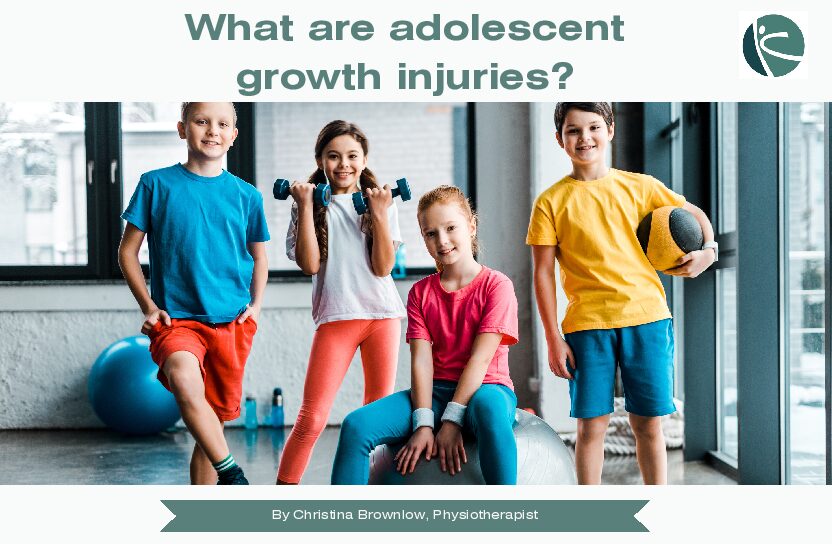What are adolescent growth injuries?
ith increasing levels of exercise and “growth spurts”, overuse injuries are extremely common in adolescents. These are characterized by pain, swelling and discomfort during or following exercise or “growth spurts”. The most common injuries include Osgood-Schlatter’s Disease (knee), Sinding-Larsen-Johansson Disease (knee), Sever’s Disease (heel) and Mechanical Low Back Pain.
There are a few musculoskeletal differences that exist between adolescents and mature adults that predispose them to different types of injuries.
These include:
1. Ligament and tendon injuries are less frequent than growth plate injuries (the joint capsule and ligaments in an adolescent is two to five times stronger than the growth plate).
2. The growth plate is highly susceptible to stress. Children and adolescents are therefore more susceptible to overuse injuries if they are involved in high level sports.
3. During the adolescent growth spurts, bones grow faster than muscles and ligaments causing muscle-tendon tightness, loss of flexibility and increase risk of overuse injuries
Common injuries:
1. Mechanical Low Back Pain: is a common condition resulting from an injury to the facet joints, muscles, and ligaments of the low back. This causes local pain in the low back and occasionally pain radiating across the low back into the buttocks. This pain is usually brought on by a combination of tightness in the muscles attaching to the low back and pelvis (due to a growth spurt) and overuse of the low back during sporting activities.
2. Osgood-Schlatter’s Disease: is one of the most common causes of knee pain in young athletes. It causes swelling, pain and tenderness just below the knee, over the tibial tuberosity (the point of bone where the quadriceps muscle attaches to the tibia). The tibial tuberosity has a small growth plate between it and the underlying bone. Constant pulling of the quadriceps muscle on the growth plate causes inflammation and in severe causes enlargement or avulsion (pulling off the bone) of the growth plate. It occurs mostly in boys who are having a growth spurt. One or both knees may be affected.
3. Sinding-Larsen-Johansson Disease: causes swelling, pain and tenderness on the top or bottom edge of the knee cap. It occurs similarly to Osgood-Schlatter’s disease, where the constant pulling of the quadriceps muscle on the growth plate at either end of the knee cap can cause inflammation and in severe cases enlargement or avulsion (pulling off the bone) of the growth plates
4. Sever’s Disease: causes swelling, pain and tenderness in or around the heel. As with Osgood-Schlatter’s disease and Sinding-Larsen Johansson disease that occurs at the knee, this is an overuse type problem associated with constant pulling of the Achilles tendon on its attachment at the heel. This can cause inflammation and in severe cases enlargement or avulsion (pulling off the bone) of the growth
plates.
Treatment:
Primary treatment for these conditions involves removing the athlete from the aggravating activities. As these conditions are generally caused by overuse, rest from the aggravating activity is essential in the initial stages of treatment. Physiotherapy will allow the fastest and safest return to activity.
After a full assessment, your physiotherapist may implement some of the following treatment technique:
– Home exercise program to allow for proper motor control and activation of muscles
– Activity modification and training modification
– Biomechanical correction
– Technique correction
– Manual therapy
– Soft tissue release
– Taping


Recent Comments